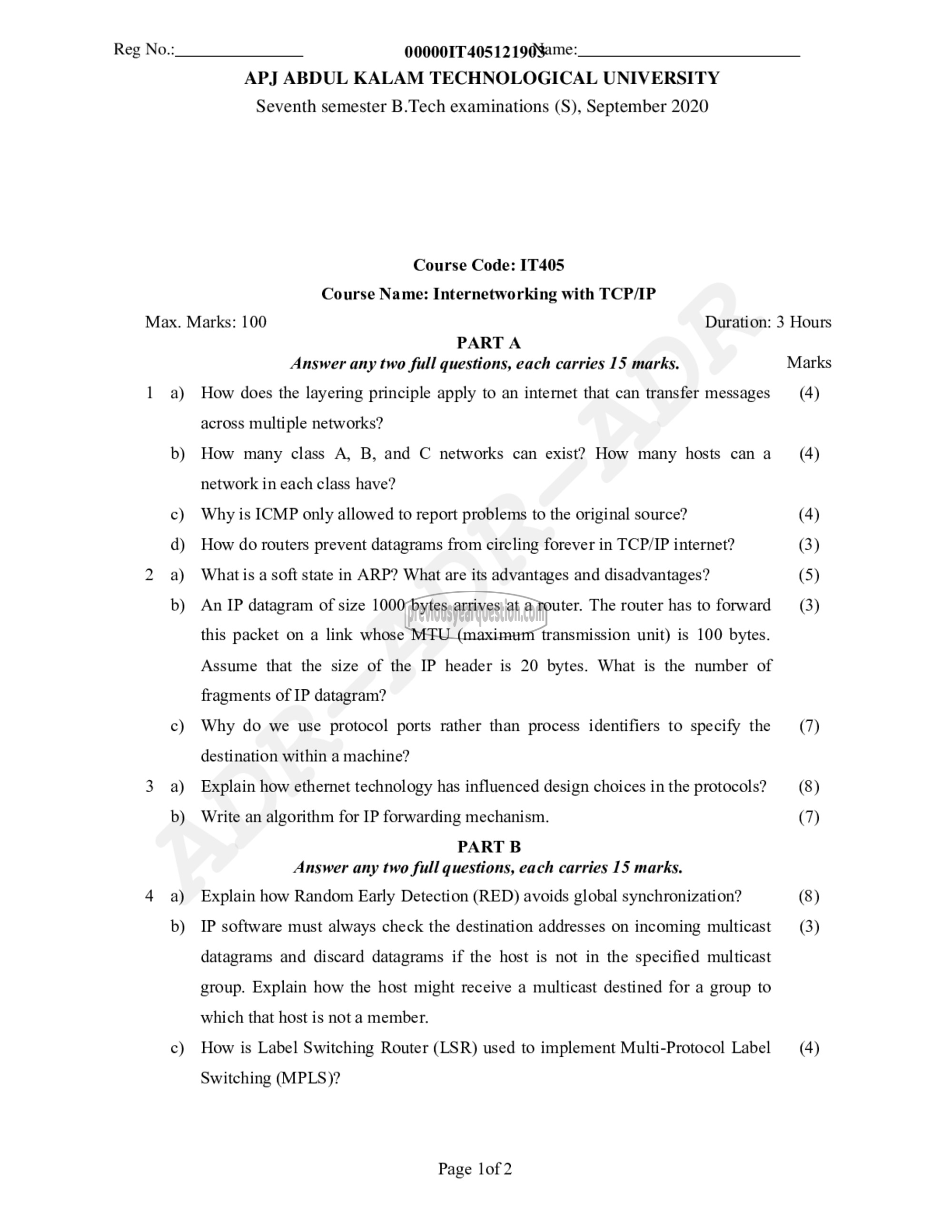APJ ABDUL KALAM TECHNOLOGICAL UNIVERSITY Previous Years Question Paper & Answer
Semester : SEMESTER 7
Subject : Internet Working with TCP/IP
Year : 2020
Term : SEPTEMBER
Branch : INFORMATION TECHNOLOGY
Scheme : 2015 Full Time
Course Code : IT 405
Page:1
Reg No.:
Max. Marks: 100
1௮
8)
b)
c)
d)
a)
b)
०)
a)
b)
a)
b)
९)
00000114051219032൩൦:
APJ ABDUL KALAM TECHNOLOGICAL UNIVERSITY
Seventh semester B.Tech examinations (S), September 2020
Course Code: IT405
Course Name: Internetworking with TCP/IP
PART A
Answer any two full questions, each carries 15 marks.
How does the layering principle apply to an internet that can transfer messages
across multiple networks?
How many class A, B, and C networks can exist? How many hosts can a
network in each class have?
Why is ICMP only allowed to report problems to the original source?
How do routers prevent datagrams from circling forever in TCP/IP internet?
What is a soft state in ARP? What are its advantages and disadvantages?
An IP datagram of size 1000 bytes arrives at a router. The router has to forward
this packet on a link whose MTU (maximum transmission unit) is 100 bytes.
Assume that the size of the IP header is 20 bytes. What is the number of
fragments of IP datagram?
Why do we use protocol ports rather than process identifiers to specify the
destination within a machine?
Explain how ethernet technology has influenced design choices in the protocols?
Write an algorithm for IP forwarding mechanism.
PART B
Answer any two full questions, each carries 15 marks.
Explain how Random Early Detection (RED) avoids global synchronization?
IP software must always check the destination addresses on incoming multicast
datagrams and discard datagrams if the host is not in the specified multicast
group. Explain how the host might receive a multicast destined for a group to
which that host is not a member.
How is Label Switching Router (LSR) used to implement Multi-Protocol Label
Switching (MPLS)?
Page lof2
Duration: 3 Hours
Marks
(4)
(4)
(4)
(3)
(5)
(3)
(7)
(8)
(7)
(8)
(3)
(4)
